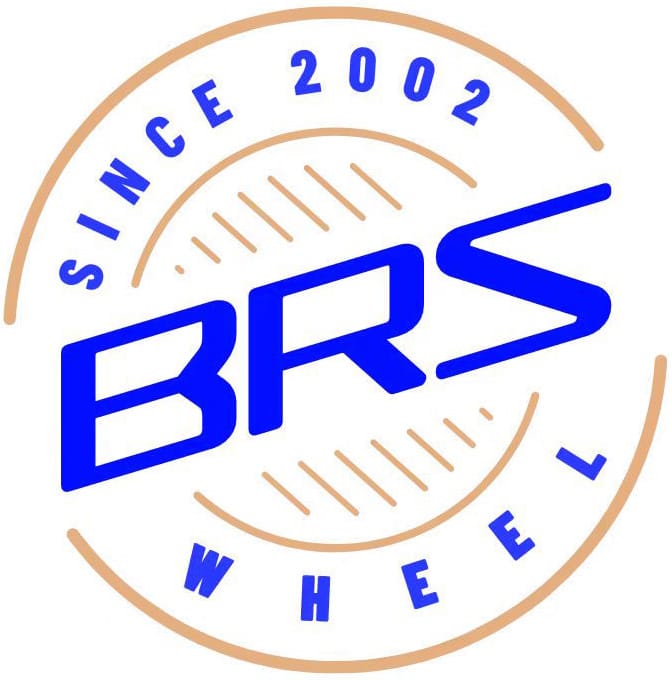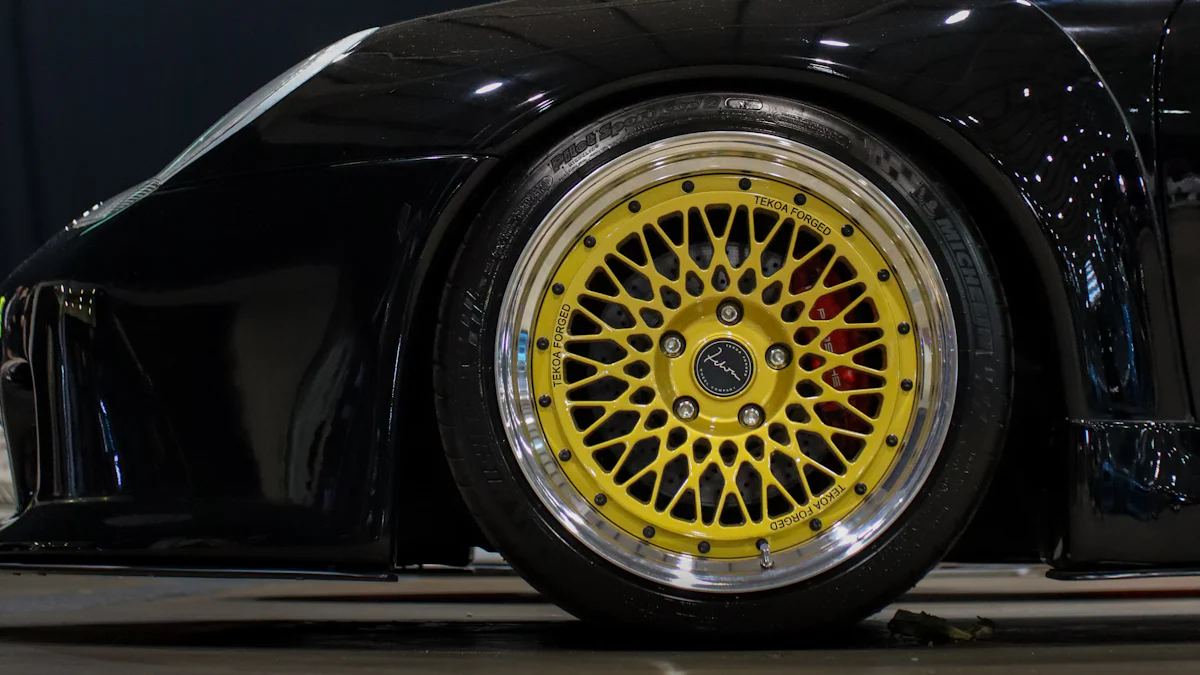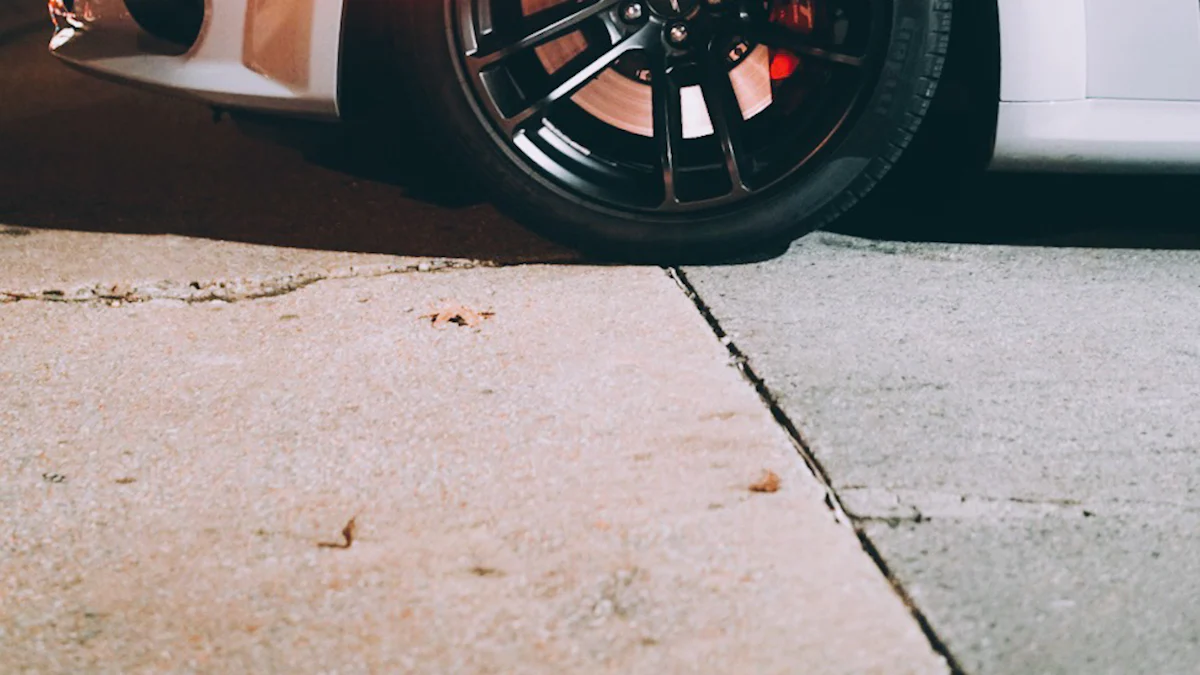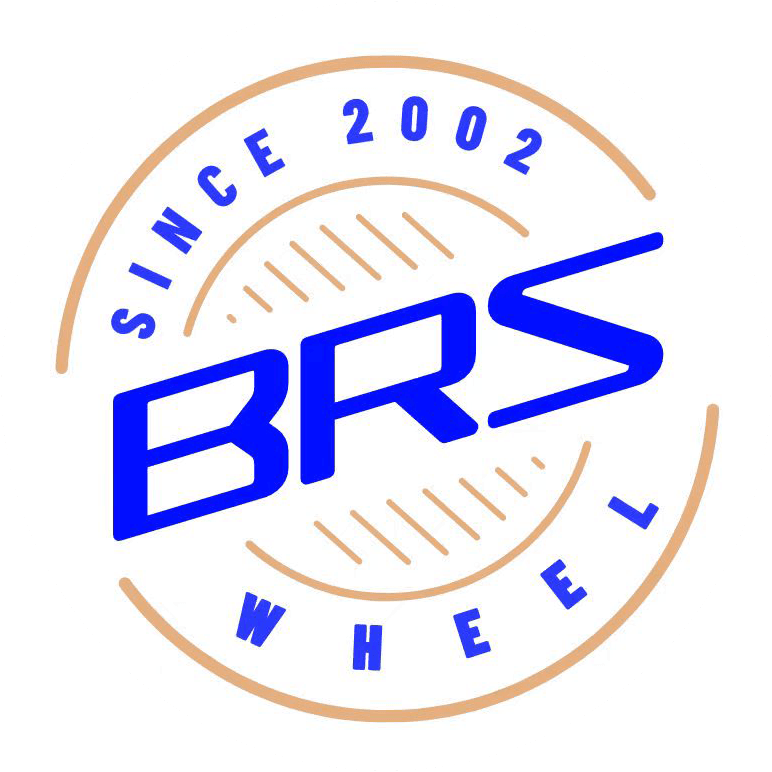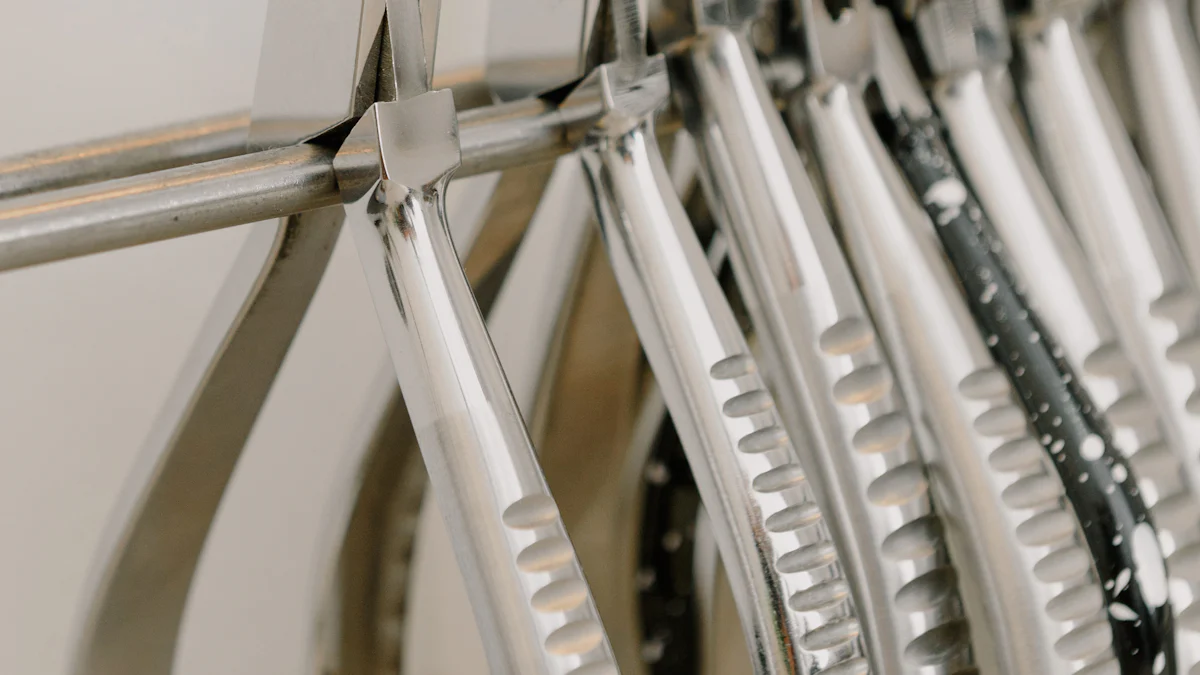
Maintaining your 16×6.5 steel rim is essential for ensuring safety, enhancing performance, and preserving its appearance. Steel rims are known for their durability and strength, making them ideal for heavy loads and rough terrains. However, regular care is necessary to prevent rust, damage, and wear. Proper maintenance not only extends the lifespan of your rims but also saves you from costly repairs. By keeping your rims in top condition, you ensure reliable performance and protect your investment for years to come.
Key Takeaways
- Regular cleaning of your 16×6.5 steel rims is crucial to prevent rust and maintain their appearance. Aim to clean them at least once a month, or more often in harsh conditions.
- Use the right tools and materials, such as mild detergents and soft brushes, to avoid damaging the rims during cleaning.
- Inspect your rims regularly for signs of rust, damage, or wear, especially after driving in wet or snowy conditions. Early detection can save you from costly repairs.
- Apply a protective coating or wax after cleaning to shield your rims from moisture and contaminants, significantly reducing the risk of rust.
- Polishing your rims not only enhances their look but also protects against environmental damage and extends their lifespan.
- Store your rims in a cool, dry place when not in use to prevent rust and maintain their integrity.
- Maintain your cleaning tools by keeping them clean and replacing worn-out items to ensure effective rim care.
Routine Cleaning for 16×6.5 Steel Rims
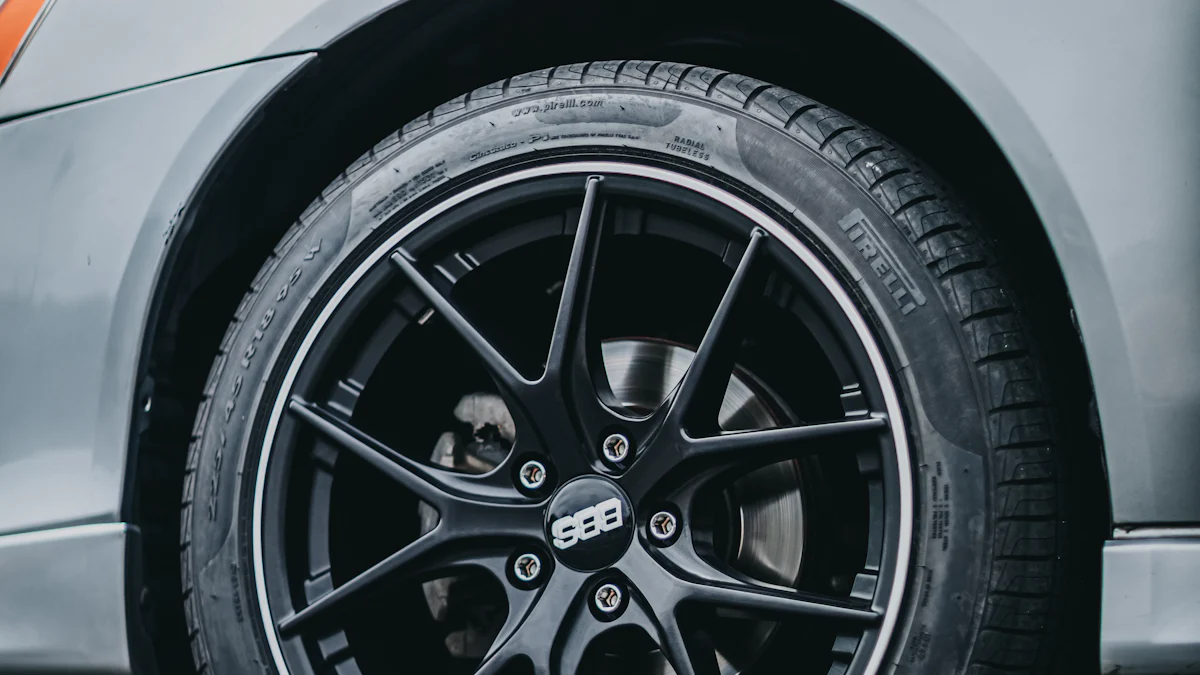
Keeping your 16×6.5 steel rims clean is essential for maintaining their durability and appearance. Dirt, brake dust, and road grime can accumulate over time, leading to corrosion and damage if left untreated. Regular cleaning not only enhances the look of your rims but also ensures their long-term performance.
Essential Tools and Materials
To clean your 16×6.5 steel rims effectively, you need the right tools and materials. Using improper products can harm the surface of the rims, so it’s important to choose carefully. Here’s what you’ll need:
- Mild detergent or wheel cleaner: Opt for a gentle cleaner specifically designed for steel wheels. Avoid abrasive chemicals that can damage the finish.
- Soft-bristled brush or sponge: These tools help remove dirt and grime without scratching the surface.
- Bucket of water: Use clean water to rinse off debris and soap residue.
- Microfiber cloth or towel: This is ideal for drying the rims thoroughly to prevent water spots and corrosion.
- Protective coating or wax: Applying a protective layer after cleaning shields the rims from environmental elements and reduces the risk of rust.
Having these tools on hand ensures you can clean your rims safely and effectively.
Step-by-Step Cleaning Process
Follow these steps to clean your 16×6.5 steel rims and keep them in top condition:
- Rinse the rims: Start by rinsing the rims with clean water to remove loose dirt and debris. This step prevents scratches during the cleaning process.
- Apply the cleaner: Spray or apply a mild detergent or wheel cleaner onto the surface of the rims. Ensure the cleaner covers all areas, including hard-to-reach spots.
- Scrub gently: Use a soft-bristled brush or sponge to scrub the rims. Focus on removing brake dust, road salt, and grime. Avoid using excessive force to prevent scratches.
- Rinse thoroughly: Wash off the cleaner with clean water. Make sure no residue remains, as leftover soap can cause streaks or spots.
- Dry the rims: Use a microfiber cloth or towel to dry the rims completely. This step is crucial to prevent water spots and corrosion.
- Apply a protective coating: Once the rims are dry, apply a protective wax or sealant. This adds a layer of protection against rust and environmental damage.
Pro Tip: Clean your rims regularly, especially after driving in harsh conditions like snow or rain. Road salt and moisture can accelerate corrosion, so frequent cleaning is key to preserving your rims.
By following this routine, you can maintain the integrity and appearance of your 16×6.5 steel rims. Regular cleaning not only prevents damage but also ensures your rims remain a reliable and stylish part of your vehicle.
Removing Rust and Oxidation from 16×6.5 Steel Rims

Rust and oxidation can significantly impact the performance and appearance of your 16×6.5 steel rims. Addressing these issues promptly ensures your rims remain durable and safe for use. By identifying problem areas, using effective removal methods, and taking preventive measures, you can maintain the integrity of your steel rims.
Identifying Problem Areas
Detecting rust early is crucial to prevent further damage. Regularly inspect your rims for signs of rust or oxidation. Focus on areas prone to moisture accumulation, such as:
- Edges and crevices: These spots often trap water and dirt, creating an ideal environment for rust.
- Around lug holes: The constant exposure to torque and pressure can make these areas vulnerable.
- Surface scratches or chips: Damaged paint or coating exposes the steel to air and moisture, accelerating oxidation.
Tip: Perform inspections after driving in wet or snowy conditions. Road salt and moisture can speed up rust formation.
Effective Rust Removal Methods
Removing rust requires the right tools and techniques to avoid damaging the rims. Follow these steps to restore your 16×6.5 steel rims:
- Clean the surface: Wash the rims with a mild detergent and water to remove dirt and grime. Dry them thoroughly to prevent spreading moisture during rust removal.
- Use a rust remover: Apply a rust remover specifically designed for steel surfaces. Follow the product instructions for the best results.
- Scrub gently: Use a soft-bristled brush or fine steel wool to scrub the rusted areas. Avoid excessive force to prevent scratching the rim surface.
- Rinse and dry: After removing the rust, rinse the rims with clean water to eliminate any residue. Dry them completely to avoid further oxidation.
- Apply a protective coating: Once the rims are clean and rust-free, apply a protective wax or sealant. This step helps shield the steel from moisture and environmental elements.
Pro Tip: For stubborn rust, consider using a mixture of baking soda and water as a natural alternative. Apply the paste to the rusted area, let it sit for a few minutes, and scrub gently.
Preventing Future Rust Formation
Preventive measures are essential to keep rust at bay and prolong the life of your rims. Incorporate these practices into your maintenance routine:
- Apply a protective layer: Use a high-quality wax or sealant regularly to create a barrier against moisture and contaminants.
- Store rims properly: When not in use, store your rims in a cool, dry place. Avoid areas with high humidity or direct exposure to water.
- Avoid harsh chemicals: Steer clear of abrasive cleaners or tools that can damage the protective coating on your rims.
- Clean after exposure: Wash your rims after driving on salted roads or through muddy terrain. Removing debris promptly reduces the risk of rust.
Did You Know? Regular cleaning and protection not only prevent rust but also enhance the overall appearance of your rims, keeping them looking new for longer.
By addressing rust and oxidation effectively, you can ensure your 16×6.5 steel rims remain in excellent condition. Consistent care and preventive measures will save you time and money while maintaining the safety and aesthetics of your vehicle.
Polishing and Buffing Techniques for 16×6.5 Steel Rims
Polishing and buffing your 16×6.5 steel rims not only enhances their appearance but also protects them from environmental damage. A well-polished rim reflects light beautifully, giving your vehicle a sleek and clean look. Regular polishing also helps maintain the integrity of the steel, ensuring long-lasting performance.
Selecting the Right Products
Choosing the right products is essential for effective polishing and buffing. Using unsuitable materials can damage the surface of your rims. Here are some recommended products to consider:
- Autosol Metal Polish: This product is highly effective for restoring shine and removing minor scratches or blemishes from steel rims.
- Nitromorse: Ideal for rims that have been painted for years, this product helps prepare the surface for polishing by removing old layers of paint or coatings.
- Wet and Dry Sandpaper: Use fine-grit sandpaper to smooth out imperfections before polishing.
- Protective Coating or Wax: After polishing, applying a protective layer prevents rust and maintains the polished finish.
Tip: Always test a small, inconspicuous area of the rim before applying any product to ensure compatibility with the surface.
Polishing and Buffing Steps
Follow these steps to polish and buff your 16×6.5 steel rims effectively:
- Clean the rims thoroughly: Start by washing the rims with a mild detergent and water. Remove all dirt, grease, and grime to create a clean surface for polishing.
- Prepare the surface: If the rims have old paint or coatings, use a product like Nitromorse to strip them off. For minor imperfections, gently sand the surface with fine-grit wet and dry sandpaper.
- Apply the polish: Use a small amount of Autosol Metal Polish or a similar product. Apply it evenly across the rim using a soft cloth or applicator pad.
- Buff the surface: Use a clean microfiber cloth or a buffing wheel to work the polish into the steel. Move in circular motions to achieve an even shine. For best results, apply consistent pressure without overdoing it.
- Inspect the finish: Check the rim for any missed spots or uneven areas. Reapply polish if necessary and buff again until you achieve the desired shine.
- Seal the surface: Once the rims are polished, apply a protective coating or wax. This step locks in the shine and provides a barrier against moisture and contaminants.
Pro Tip: Use a buffing machine for a professional-grade finish. It saves time and ensures a more uniform polish compared to manual buffing.
Benefits of Regular Polishing
Polishing your rims regularly offers several advantages beyond just aesthetics. Here’s why you should make it a part of your maintenance routine:
- Enhanced Appearance: Polished rims give your vehicle a clean and stylish look, making it stand out on the road.
- Rust Prevention: The polishing process removes surface contaminants that can lead to rust. Applying a protective layer afterward further reduces the risk of corrosion.
- Extended Lifespan: Regular polishing maintains the structural integrity of the steel, ensuring your rims last longer.
- Improved Resale Value: Well-maintained rims increase the overall value of your vehicle, making it more appealing to potential buyers.
Did You Know? Polished rims not only look great but also reflect heat more effectively, which can help reduce wear on your tires during long drives.
By following these polishing and buffing techniques, you can keep your 16×6.5 steel rims in excellent condition. Regular care ensures they remain durable, safe, and visually appealing for years to come.
Inspecting 16×6.5 Steel Rims for Damage or Wear
Regular inspection of your 16×6.5 steel rims is crucial for maintaining safety and performance. Identifying damage or wear early can prevent accidents and costly repairs. By knowing what to look for and when to seek professional help, you can ensure your rims remain in excellent condition.
Key Inspection Points
When inspecting your rims, focus on specific areas prone to damage or wear. A thorough check helps you spot potential issues before they escalate. Here are the key points to examine:
- Surface Condition: Look for cracks, dents, or bends on the rim surface. These can compromise the structural integrity of the rim and affect your vehicle’s handling.
- Rust and Corrosion: Check for rust spots or signs of oxidation. Rust weakens the steel and can spread if not addressed promptly.
- Lug Holes: Inspect the lug holes for elongation or wear. Damaged lug holes can lead to improper wheel mounting, which poses a safety risk.
- Rim Edge: Examine the edges for chips or damage caused by curbs or road debris. Damaged edges can affect tire sealing and lead to air leaks.
- Paint or Coating: Look for peeling or bubbling paint, which may indicate underlying rust or moisture penetration.
Tip: Perform inspections in a well-lit area or use a flashlight to spot hidden damage. Rotate the wheel to check all angles thoroughly.
When to Consult a Professional
While regular inspections can help you identify common issues, some problems require expert evaluation. Knowing when to consult a professional ensures your rims remain safe and functional. Seek professional assistance in the following situations:
- Severe Damage: If you notice deep cracks, significant bends, or large rust patches, consult a rim specialist. These issues often require advanced tools and expertise to repair.
- Unusual Vibrations: If your vehicle vibrates while driving, it could indicate a bent rim or uneven wear. A professional can diagnose and resolve the issue effectively.
- Tire Mounting Issues: If your tires fail to seal properly or lose air frequently, have a professional inspect the rim edges and bead area.
- Uncertain Findings: If you’re unsure about the severity of damage or wear, it’s better to err on the side of caution. A professional inspection provides peace of mind and ensures safety.
Pro Tip: Schedule a professional inspection annually or after driving in harsh conditions, such as off-road terrains or snowy roads. Regular expert evaluations complement your routine checks and enhance rim longevity.
By inspecting your 16×6.5 steel rims regularly and addressing issues promptly, you can maintain their durability and performance. Combining personal checks with professional evaluations ensures your rims stay reliable and safe for every journey.
Maintaining Tools and Equipment for Rim Care
Proper care of your tools and equipment plays a vital role in ensuring effective rim maintenance. Well-maintained tools not only make the cleaning and repair process easier but also help you achieve better results. By keeping your equipment in top condition, you can extend its lifespan and avoid unnecessary expenses.
Proper Cleaning and Storage
Cleaning and storing your tools correctly ensures they remain functional and ready for use. Neglecting this step can lead to wear, rust, or even damage, which compromises their effectiveness.
- Clean after every use: Wipe down your tools with a clean cloth to remove dirt, grease, or residue. For tools exposed to water or cleaning solutions, dry them thoroughly to prevent rust.
- Use appropriate cleaning agents: For tools with metal components, use a mild cleaner or degreaser to remove stubborn grime. Avoid harsh chemicals that may corrode the surface.
- Inspect for damage: Check your tools for cracks, loose parts, or signs of wear. Address minor issues immediately to prevent further damage.
- Store in a dry place: Keep your tools in a cool, dry area to avoid exposure to moisture. Use a toolbox or storage rack to organize them and protect them from dust.
- Apply protective coatings: For metal tools, consider applying a light coat of oil to prevent rust. This step is especially important if you live in a humid environment.
Pro Tip: Label your tools and store them in designated compartments. This practice saves time and ensures you can quickly find what you need during rim maintenance.
By following these steps, you can keep your tools in excellent condition and ready for any rim care task.
Replacing Worn-Out Tools
Using worn-out tools can lead to ineffective maintenance and even damage your rims. Regularly inspecting and replacing tools ensures you always have reliable equipment on hand.
- Identify signs of wear: Look for dull edges, bent handles, or loose components. Tools that no longer function as intended should be replaced immediately.
- Prioritize safety: Damaged tools can pose safety risks, such as slipping or breaking during use. Replace any tool that compromises your safety or the quality of your work.
- Invest in quality replacements: Choose durable, high-quality tools designed for rim care. While they may cost more upfront, they often last longer and perform better.
- Dispose of old tools responsibly: Recycle metal tools or donate usable ones to local workshops. Avoid throwing them away carelessly to minimize environmental impact.
Did You Know? Regularly inspecting your tools and replacing worn-out ones not only improves your maintenance routine but also protects your rims from accidental damage caused by faulty equipment.
Maintaining your tools and equipment is just as important as caring for your rims. Clean and store them properly, and replace worn-out tools promptly. By doing so, you ensure your rim maintenance process remains efficient, safe, and effective.
FAQs
How often should I clean my 16×6.5 steel rims?
You should clean your steel rims at least once a month to remove dirt, brake dust, and road grime. If you frequently drive in harsh conditions, such as snowy or muddy roads, clean them more often. Regular cleaning prevents corrosion and keeps your rims looking their best.
What is the best way to prevent rust on steel rims?
To prevent rust, apply a protective coating or wax after cleaning your rims. This creates a barrier against moisture and contaminants. Store your rims in a dry, cool place when not in use. Avoid driving through salted roads without cleaning your rims afterward, as salt accelerates rust formation.
Can I use any cleaner for my steel rims?
No, you should avoid using harsh chemicals or abrasive cleaners. These can damage the finish and lead to corrosion. Use a mild detergent or a wheel cleaner specifically designed for steel rims. Always test the cleaner on a small area first to ensure it’s safe for your rims.
How do I know if my steel rims need professional repair?
Inspect your rims regularly for cracks, dents, or severe rust. If you notice deep damage, unusual vibrations while driving, or issues with tire mounting, consult a professional. These signs indicate problems that require expert tools and knowledge to fix.
What factors should I consider when choosing steel rims?
When selecting steel rims, ensure the size, load capacity, and offset match your vehicle’s requirements. For heavy-duty operations or harsh environments, prioritize durability and high load-bearing capacity. For off-road vehicles or trucks, balance strength and weight for optimal performance.
Why is polishing steel rims important?
Polishing enhances the appearance of your rims and protects them from environmental damage. It removes surface contaminants that can lead to rust and extends the lifespan of the steel. Regular polishing also improves the resale value of your vehicle by maintaining its aesthetic appeal.
How can I maintain the tools used for rim care?
Clean your tools after every use to remove dirt and residue. Store them in a dry, organized space to prevent rust and damage. Inspect your tools regularly for wear and replace them when necessary. Well-maintained tools ensure effective and safe rim care.
Can I repair rust on my steel rims myself?
Yes, you can remove minor rust using a rust remover or a natural alternative like baking soda paste. Scrub gently with a soft-bristled brush or fine steel wool. For severe rust, seek professional help to avoid further damage to the rims.
How does regular maintenance benefit steel rims?
Regular maintenance extends the lifespan of your rims, prevents costly repairs, and ensures safety. By cleaning, inspecting, and protecting your rims, you maintain their durability and performance. Proper care also keeps your rims visually appealing, enhancing the overall look of your vehicle.
Remember: Consistent care not only protects your investment but also ensures your rims perform at their best for years to come.
Maintaining your 16×6.5 steel rim is vital for ensuring durability, safety, and visual appeal. Regular cleaning removes harmful debris, while rust removal protects against corrosion. Polishing enhances the rims’ appearance and shields them from environmental damage. Routine inspections help you identify wear or damage early, preventing costly repairs. By dedicating time to proper maintenance, you extend the lifespan of your rims and safeguard your investment. Follow these tips consistently to keep your rims in excellent condition and enjoy reliable performance for years to come.
FAQ
What are the advantages of using steel rims?
Steel rims offer several benefits, especially for vehicles operating in challenging conditions. Their weight provides extra traction on snow and ice, making them an excellent choice for winter driving. Many car owners keep a separate set of steel rims for seasonal use. Steel rims also contract less than aluminum in cold weather, helping maintain proper tire pressure. This feature ensures better performance and safety during extreme temperature drops.
Key Takeaway: Steel rims are ideal for heavy-duty vehicles and winter conditions due to their weight and resistance to temperature changes.
What are the most durable types of rims?
Steel rims rank among the most durable options available. They resist impacts effectively and can handle heavy loads without cracking or breaking. This makes them a reliable choice for vehicles exposed to harsh environments or rough terrains. If you need both durability and performance, forged aluminum alloy rims are another excellent option, offering a balance of strength and lightweight design.
Pro Tip: Choose steel rims for maximum durability in tough conditions. For a mix of durability and performance, consider forged aluminum alloy rims.
How often should I inspect my steel rims?
You should inspect your steel rims at least once a month. Regular checks help you identify cracks, rust, or other damage early. Pay special attention after driving on rough roads or through snowy and salty conditions. Early detection of issues prevents further damage and ensures your rims remain safe and functional.
Reminder: Consistent inspections save you from costly repairs and maintain the safety of your vehicle.
Can I repair rust on steel rims myself?
Yes, you can remove minor rust from steel rims using simple tools and techniques. Start by cleaning the rims thoroughly with mild detergent and water. Apply a rust remover or a natural alternative like baking soda paste. Scrub gently with a soft-bristled brush or fine steel wool. For severe rust, consult a professional to avoid damaging the rims further.
Pro Tip: Address rust promptly to prevent it from spreading and weakening the steel.
Why should I polish my steel rims regularly?
Polishing your steel rims enhances their appearance and protects them from environmental damage. It removes surface contaminants that can lead to rust and corrosion. Regular polishing also extends the lifespan of your rims and improves the overall look of your vehicle.
Did You Know? Polished rims reflect heat more effectively, reducing tire wear during long drives.
What is the best way to prevent rust on steel rims?
To prevent rust, clean your rims regularly and apply a protective coating or wax. This creates a barrier against moisture and contaminants. Store your rims in a dry, cool place when not in use. Avoid driving through salted roads without cleaning your rims afterward, as salt accelerates rust formation.
Quick Tip: Washing your rims after exposure to road salt significantly reduces the risk of rust.
Are steel rims suitable for all types of vehicles?
Steel rims are best suited for heavy-duty vehicles, trucks, and cars used in harsh environments. They provide excellent durability and impact resistance, making them ideal for off-road conditions or winter driving. However, they may not be the best choice for sports cars or vehicles requiring lightweight rims for high-speed performance.
Consider This: Match your rim choice to your vehicle’s purpose and the conditions you drive in most frequently.
How do I maintain the tools used for rim care?
Clean your tools after every use to remove dirt and residue. Store them in a dry, organized space to prevent rust and damage. Inspect your tools regularly for wear and replace them when necessary. Well-maintained tools ensure effective and safe rim care.
Pro Tip: Apply a light coat of oil to metal tools to prevent rust, especially if you live in a humid environment.
What makes steel rims a good choice for winter?
Steel rims perform exceptionally well in winter conditions. Their weight provides better traction on icy roads. They also contract less than aluminum in cold weather, maintaining proper tire pressure. Many drivers switch to steel rims during winter to ensure safety and reliability.
Key Insight: Steel rims are a practical and cost-effective solution for winter driving challenges.
How does regular maintenance benefit steel rims?
Regular maintenance extends the lifespan of your rims and ensures safety. Cleaning removes harmful debris, while inspections help you spot damage early. Polishing protects against rust and enhances appearance. By dedicating time to proper care, you avoid costly repairs and keep your rims in excellent condition.
Final Thought: Consistent maintenance safeguards your investment and ensures your rims perform reliably for years.
Related News
- Posted In:General
